The Study of Tool Wear Mechanism Considering the Tool–Chip Interface Temperature during Milling of Aluminum Alloy
Abstract
:1. Introduction
2. The Mathematical Model of Temperature Field
2.1. The Temperature Field Model of Milling
2.2. The Tool–Chip Interface Temperature
2.3. Experimental Setup
2.3.1. The Workpiece and Tool Materials
2.3.2. The Experimental Scheme Design
3. Results and Discussion
3.1. Tool–Chip Interface Temperature
3.2. The Effect of the Tool–Chip Interface Temperature
3.2.1. The Tool Wear Morphology
3.2.2. The Effect of the Tool–Chip Interface Temperature on the VB
3.2.3. The Wear Mechanism
4. Conclusions
Author Contributions
Funding
Data Availability Statement
Conflicts of Interest
Glossary
| Symbol | Meaning | Unit |
| v | Cutting speed | m/min |
| f | Feed rate | mm/rev |
| L | Milling length | m |
| ap | Cutting depth | mm |
| ae | Cutting width | mm |
| VB | Wear land width | μm |
| Tint | Tool–chip interface temperature | °C |
| F | Cutting force | N |
| φc | Shear angle | ° |
| Lt | Tool–chip contact length | mm |
| vs | Velocity at shear plane | m/min |
| vc | Velocity at rake face | m/min |
| αr | Rake angle | ° |
| h | Instantaneous chip thickness | mm |
| qt | Heat production at shear face | J |
| qf | Heat production at rake face | J |
| θ | Tool rotation angle | ° |
References
- Luo, A.A.; Sachdev, A.K.; Apelian, D. Alloy development and process innovations for light metals casting. J. Mater. Process. Technol. 2022, 306, 117606. [Google Scholar] [CrossRef]
- Xu, J.; Li, L.; Lin, T.; Gupta, M.K.; Chen, M. Machinability analysis in high-speed milling of AlSi7Mg alloys under EMQL conditions: An approach toward sustainable manufacturing. J. Manuf. Process. 2022, 81, 1005–1017. [Google Scholar] [CrossRef]
- Zhang, X.; Gao, Y.; Guo, Z.; Zhang, W.; Yin, J.; Zhao, W. Physical model-based tool wear and breakage monitoring in milling process. Mech. Syst. Signal Process. 2023, 184, 109641. [Google Scholar] [CrossRef]
- Tseng, H.C.; Tsai, M.S.; Yeh, B.C.; Li, K.M. Analysis of Tool Wear by Using a Cutting Bending Moment Model for Milling Processes. Int. J. Precis. Eng. Manuf. 2022, 23, 943–955. [Google Scholar] [CrossRef]
- Meng, X.; Lin, Y.; Mi, S. The Research of Tool Wear Mechanism for High-Speed Milling ADC12 Aluminum Alloy Considering the Cutting Force Effect. Materials 2021, 14, 1054. [Google Scholar] [CrossRef] [PubMed]
- Alshmri, F.; Atkinson, H.V.; Hainsworth, S.V.; Haidon, C.; Lawes, S.D.A. Dry sliding wear of aluminium-high silicon hypereutectic alloys. Wear 2014, 313, 106–116. [Google Scholar] [CrossRef]
- Zhao, G.; Xin, L.; Li, L.; Zhang, Y.; Ning, H.E.; Hansen, H.N. Cutting force model and damage formation mechanism in milling of 70wt% Si/Al composite. Chin. J. Aeronaut. 2023, 36, 114–128. [Google Scholar] [CrossRef]
- Zheng, Z.P.; Lin, N.; Zhao, L.B.; Li, X.; He, Y.H. Fabrication and wear mechanism of Ti(C,N)-based cermets tools with designed microstructures used for machining aluminum alloy. Vacuum 2018, 156, 30–38. [Google Scholar] [CrossRef]
- Oliver, H.; Pete, C.; Martin, J. On the mechanism of tool crater wear during titanium alloy machining. Wear 2017, 374–375, 15–20. [Google Scholar]
- Yoshikawa, H.; Nishiyama, A. CVD diamond coated insert for machining high silicon aluminum alloys. Diam. Relat. Mater. 1999, 8, 1527–1530. [Google Scholar] [CrossRef]
- Rahaman, M.L.; Liangchi, Z. An investigation into the friction and wear mechanisms of aluminium high silicon alloy under contact sliding. Wear 2017, 376–377, 940–946. [Google Scholar] [CrossRef]
- Bhowmick, S.; Banerji, A.; Alpas, A.T. Tribological behavior of Al-6.5%, -12%, -18.5% Si alloys during machining using CVD diamond and DLC coated tools. Surf. Coat. Technol. 2015, 284, 353–364. [Google Scholar] [CrossRef]
- Banerji, A.; Bhowmick, S.; Alpas, A.T. Role of temperature on tribological behaviour of Ti containing MoS2 coating against aluminum alloys. Surf. Coat. Technol. 2017, 314, 2–12. [Google Scholar] [CrossRef]
- Aslantas, K.; Ucun, I.; Çicek, A. Tool life and wear mechanism of coated and uncoated Al2O3/TiCN mixed ceramic tools in turning hardened alloy steel. Wear 2012, 274–275, 442–451. [Google Scholar] [CrossRef]
- Wang, C.Y.; Xie, Y.X.; Qin, Z.; Lin, H.S.; Yuan, Y.H.; Wang, Q.M. Wear and breakage of TiAlN- and TiSiN-coated carbide tools during high-speed milling of hardened steel. Wear 2015, 336–337, 29–42. [Google Scholar] [CrossRef]
- Chen, J.; Yu, W.; Zuo, Z.; Li, Y.; Chen, D.; An, Q.; Chen, M. Tribological properties and tool wear in milling of in-situ TiB2/7075 Al composite under various cryogenic MQL conditions. Tribol. Int. 2021, 160, 107021. [Google Scholar] [CrossRef]
- Venugopal, K.A.; Paul, S.; Chattopadhyay, A.B. Growth of tool wear in turning of Ti-6Al-4V alloy under cryogenic cooling. Wear 2007, 262, 1071–1078. [Google Scholar] [CrossRef]
- Li, X.; Zhou, Y.; Liu, J.; Gao, J. Research on wear mechanism of carbide tool for high-speed cutting aluminum alloy. Powder Metall. Technol. 2018, 36, 256–260. [Google Scholar]
- Rimpault, X.; Il, A.; Chatelain, J.F.; Lalonde, J.F.; Balazinski, M. Workpiece subsurface temperature study during aluminum skin milling in slotting and ramping. Procedia CIRP 2018, 77, 417–420. [Google Scholar] [CrossRef]
- Coz, G.L.; Marinescu, M.; Devillez, A.; Dudzinski, D.; Velnom, L. Measuring temperature of rotating cutting tools: Application to MQL drilling and dry milling of aerospace alloys. Appl. Therm. Eng. 2012, 36, 434–441. [Google Scholar] [CrossRef]
- Karaguzel, U.; Bakkal, M.; Budak, E. Modeling and Measurement of Cutting Temperatures in Milling—ScienceDirect. Procedia CIRP 2016, 46, 173–176. [Google Scholar] [CrossRef]
- Davoodi, B.; Hosseinzadeh, H. A new method for heat measurement during high speed machining. Measurement 2012, 45, 2135–2140. [Google Scholar] [CrossRef]
- Gekonde, H.O.; Subramanian, S.V. Tribology of tool-chip interface and tool wear mechanisms. Surf. Coat. Technol. 2002, 149, 151–160. [Google Scholar] [CrossRef]
- Shaw, M.C.; Cookson, J.O. Metal Cutting Principles. Tribol. Int. 1985, 18, 55. [Google Scholar] [CrossRef]
- Cui, X.; Guo, J.; Zhao, J.; Yan, Y. Chip temperature and its effects on chip morphology, cutting forces, and surface roughness in high-speed face milling of hardened steel. Int. J. Adv. Manuf. Technol. 2015, 77, 2209–2219. [Google Scholar] [CrossRef]
- Cui, D.; Zhang, D.; Wu, B.; Luo, M. An investigation of tool temperature in end milling considering the flank wear effect. Int. J. Mech. Sci. 2017, 131–132, 613–624. [Google Scholar] [CrossRef]
- Altintas, Y. Manufacturing Automation: Metal Cutting Mechanics, Machine Tool Vibrations, and CNC Design, 2nd ed.; Cambridge University Press: Cambridge, MA, USA, 2012. [Google Scholar]
- Tsai, M.Y.; Chang, S.Y.; Hung, J.P.; Wang, C. Investigation of milling cutting forces and cutting coefficient for aluminum 6060-T6. Comput. Electr. Eng. 2016, 51, 320–330. [Google Scholar] [CrossRef]
- Wan, M.; Ye, X.Y.; Yang, Y.; Zhang, W.H. Theoretical prediction of machining-induced residual stresses in three-dimensional oblique milling processes. Int. J. Mech. Sci. 2017, 133, 426–437. [Google Scholar] [CrossRef]
- Zhou, Z. Theory of Metal Cutting; China Machine Press: Beijing, China, 1992. [Google Scholar]
- Bi, J.; Cong, M.; Liu, D.; Xu, X.; Zhao, X. Simulation and experimental analysis of cutting of ADC12 Al-Si alloy. Modul. Mach. Tool Autom. Manuf. Tech. 2017, 1, 127–130. [Google Scholar]
- Schulz, H.; Abele, E.; He, N. The High Speed Machining-Fundamentals and Applications; Science Press: Beijing, China, 2010. [Google Scholar]
- Quan, Y.; Zhao, J.; Li, Y. Surface emissivity calibration for metal cutting tool and workpiece materials with infrared imager. J. Mech. Eng. 2009, 12, 188–192. [Google Scholar] [CrossRef]
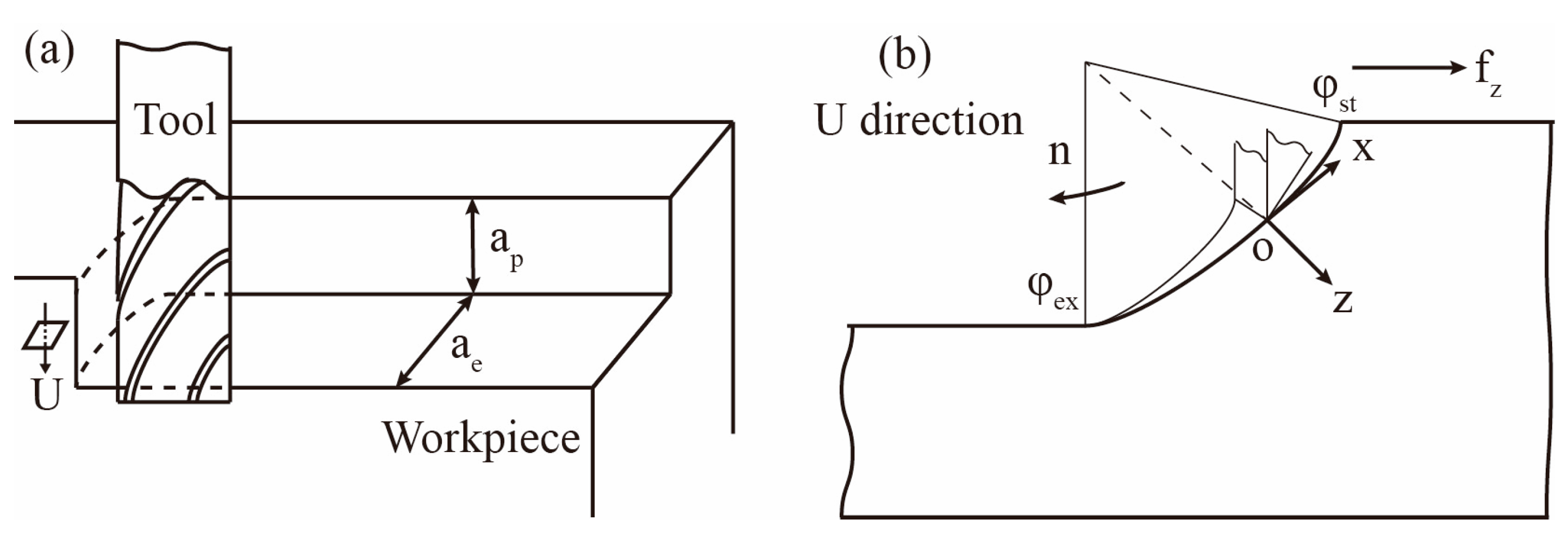

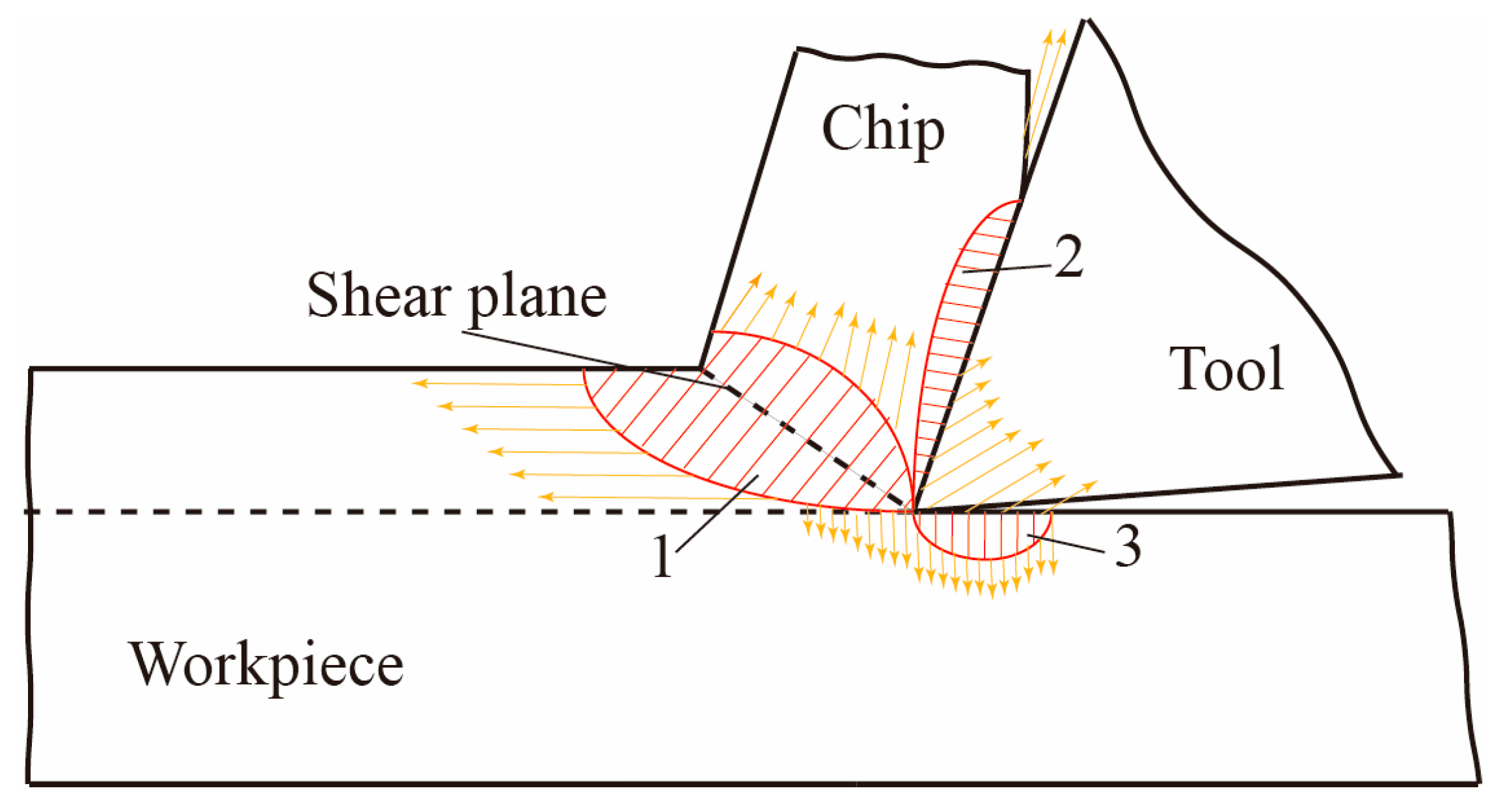
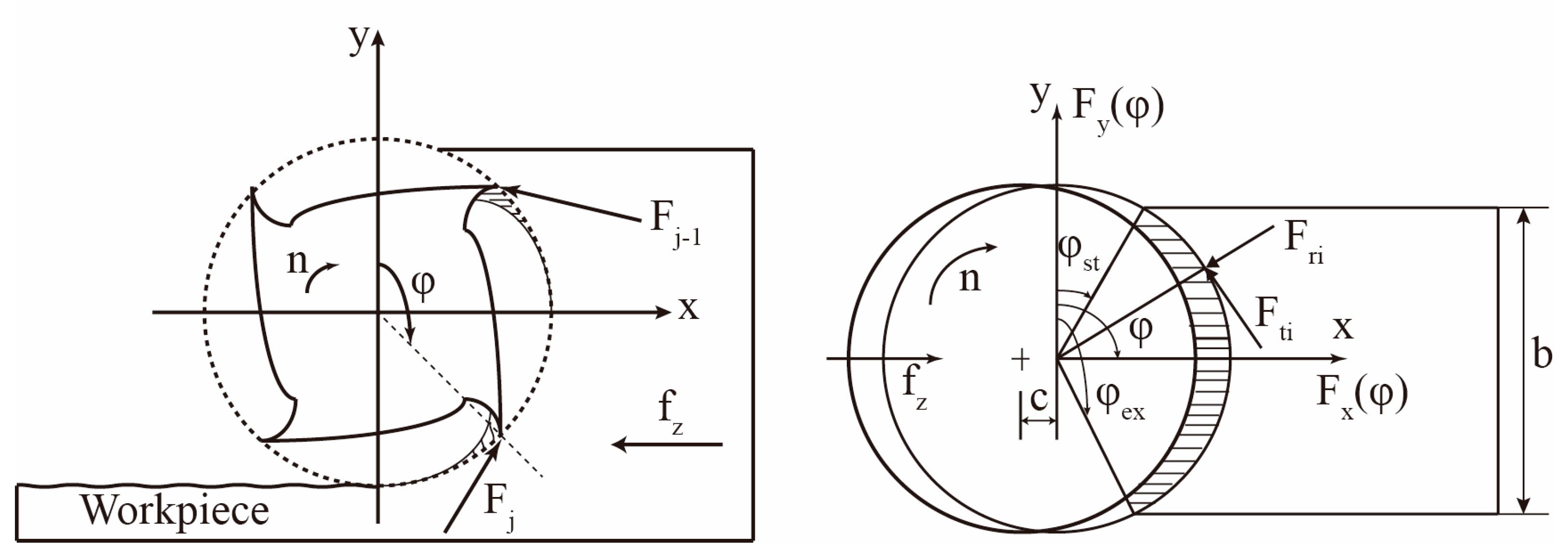
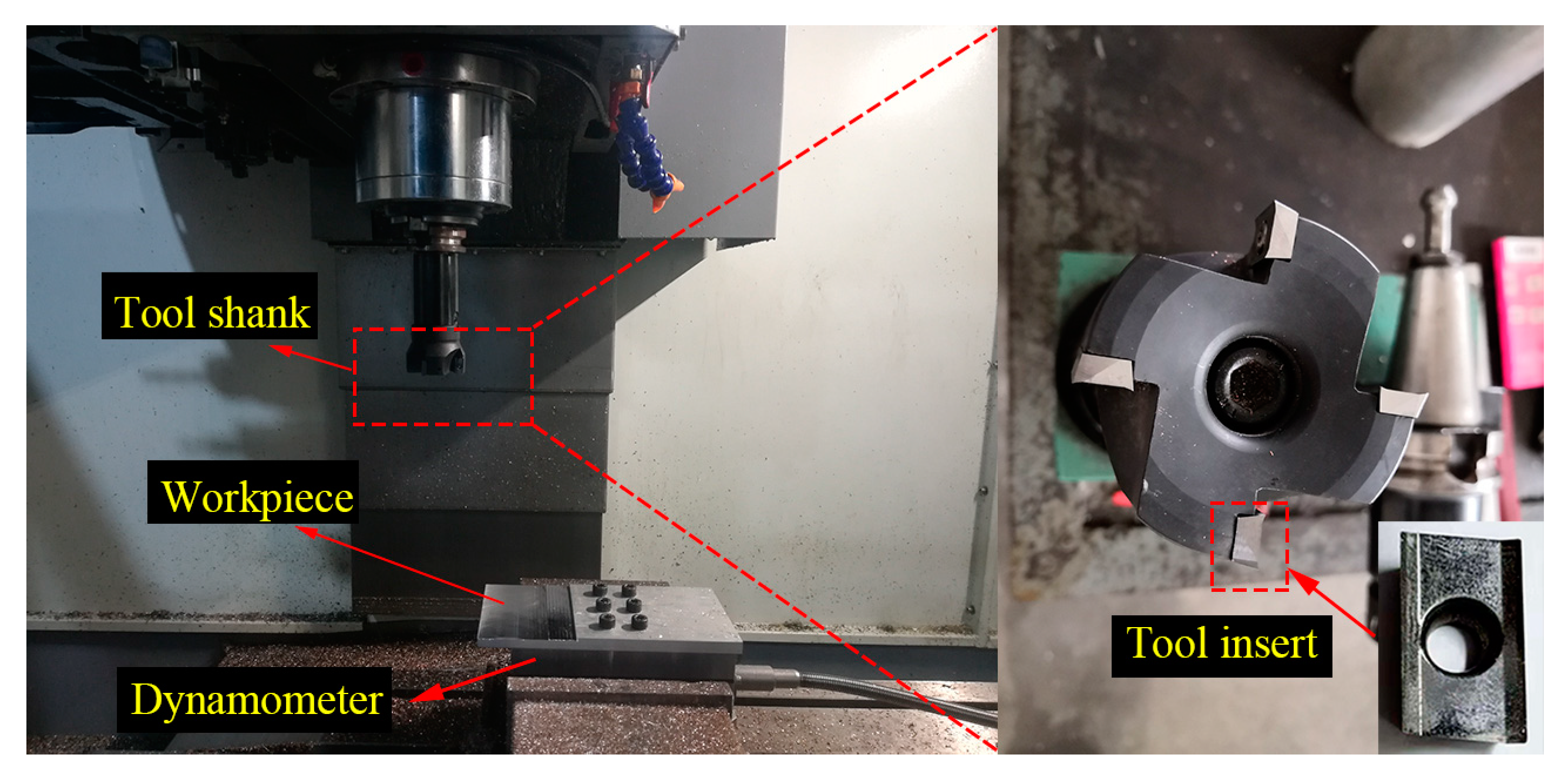
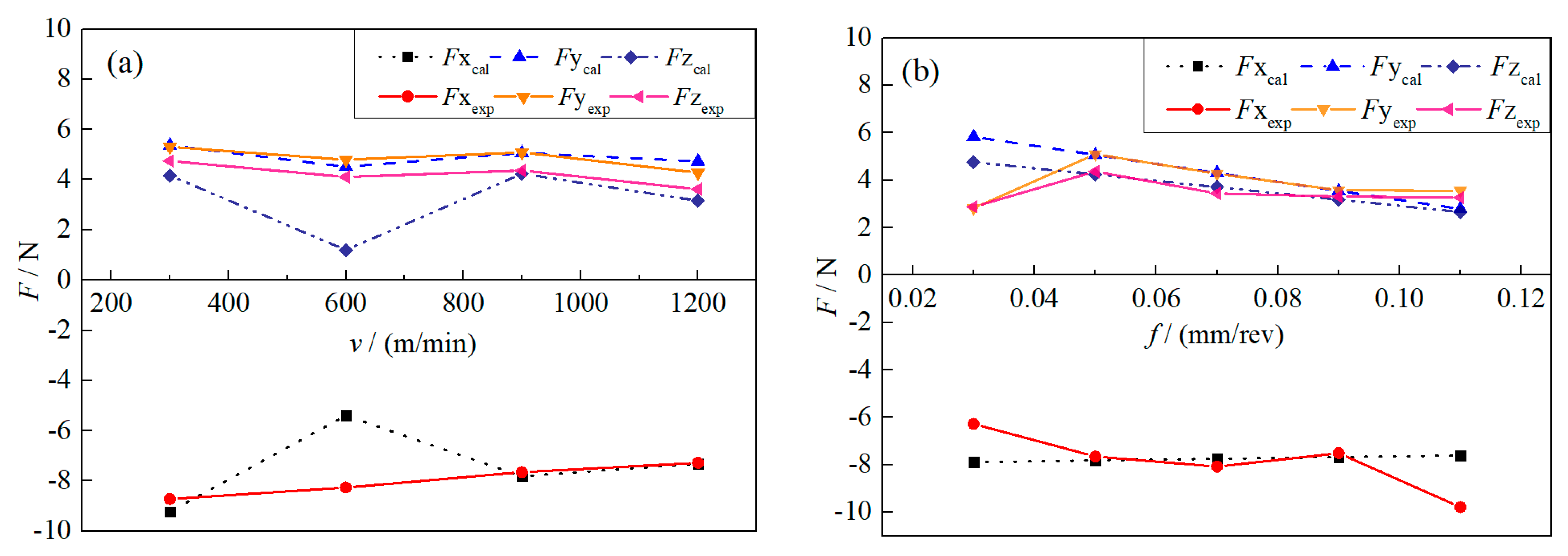
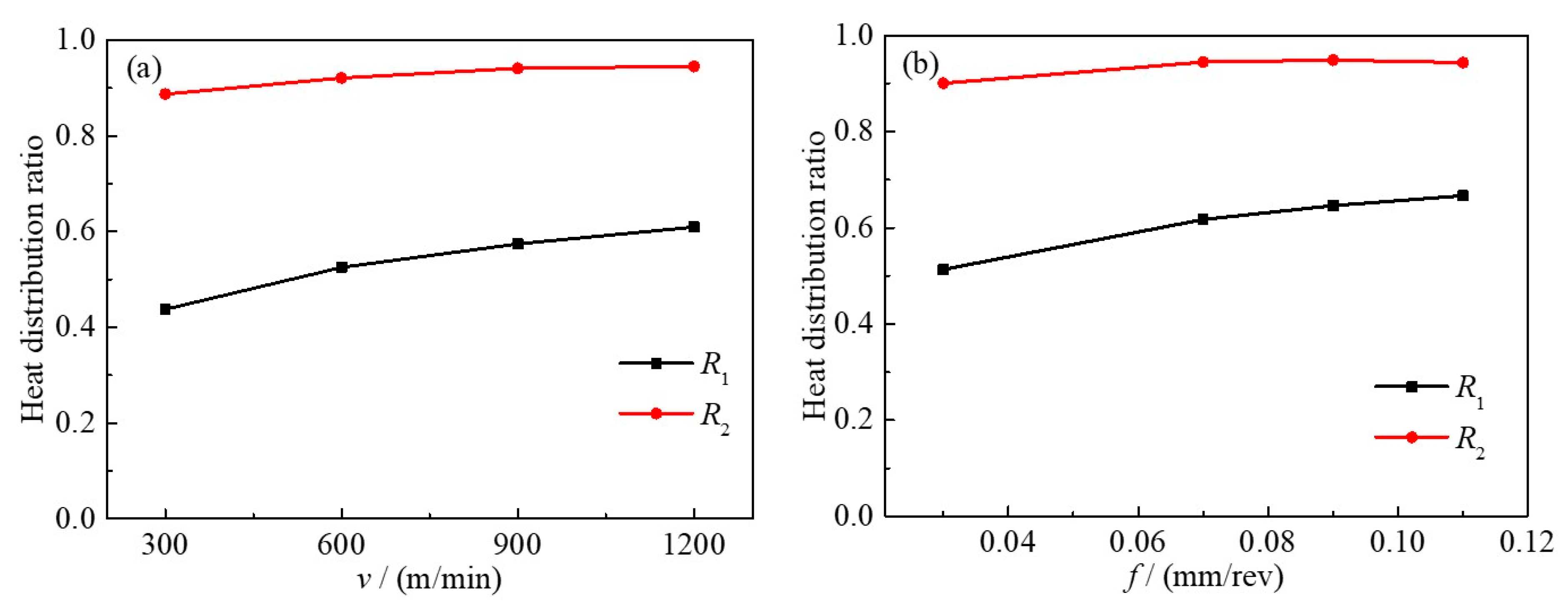
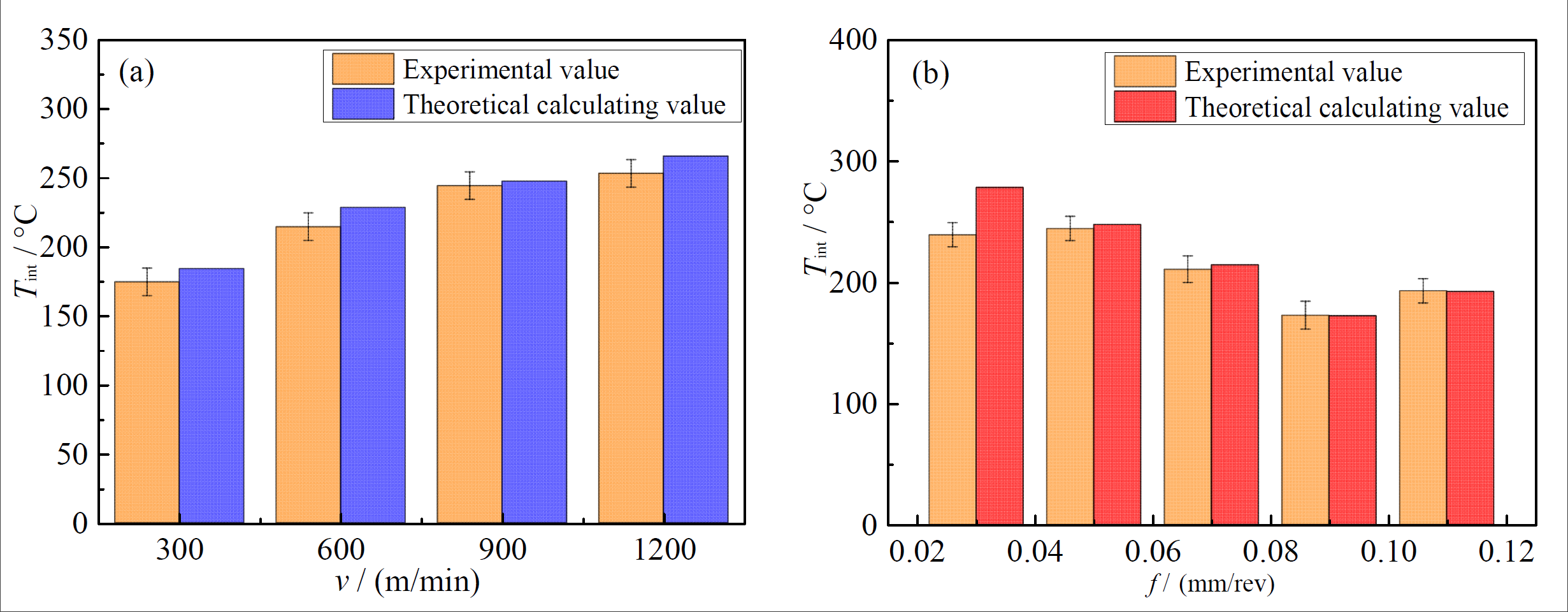
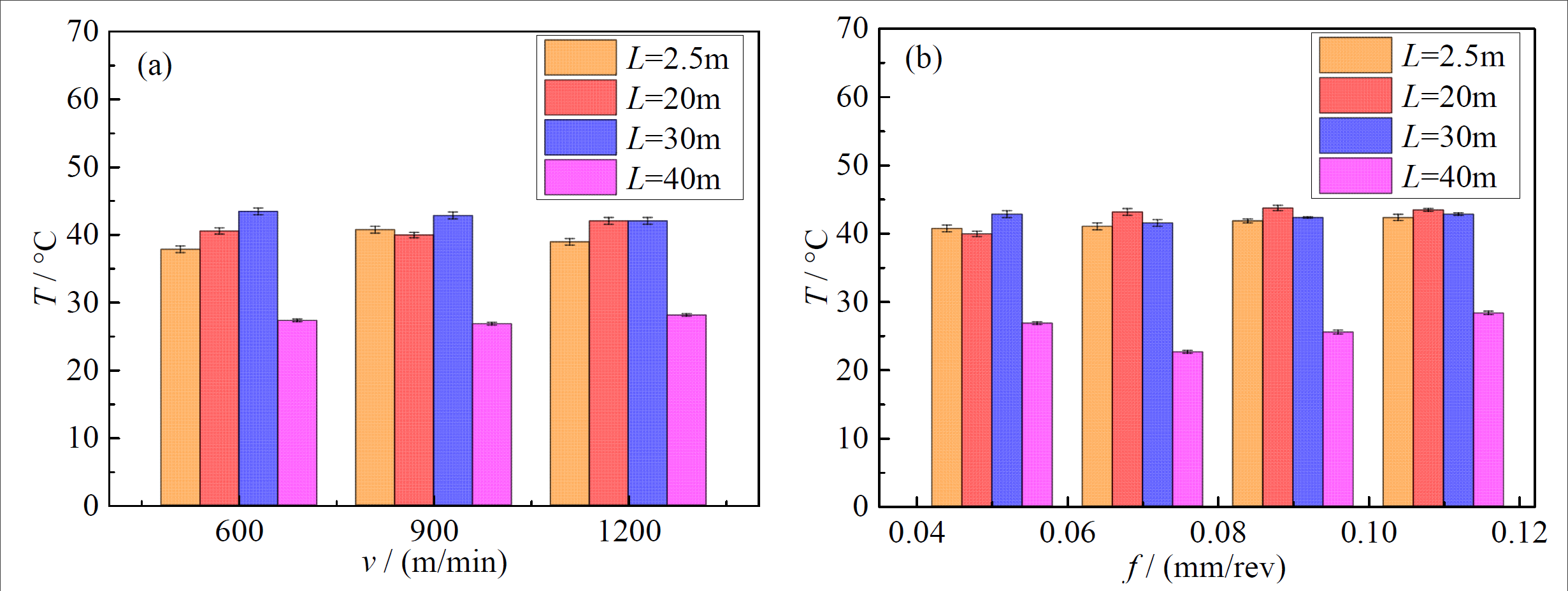
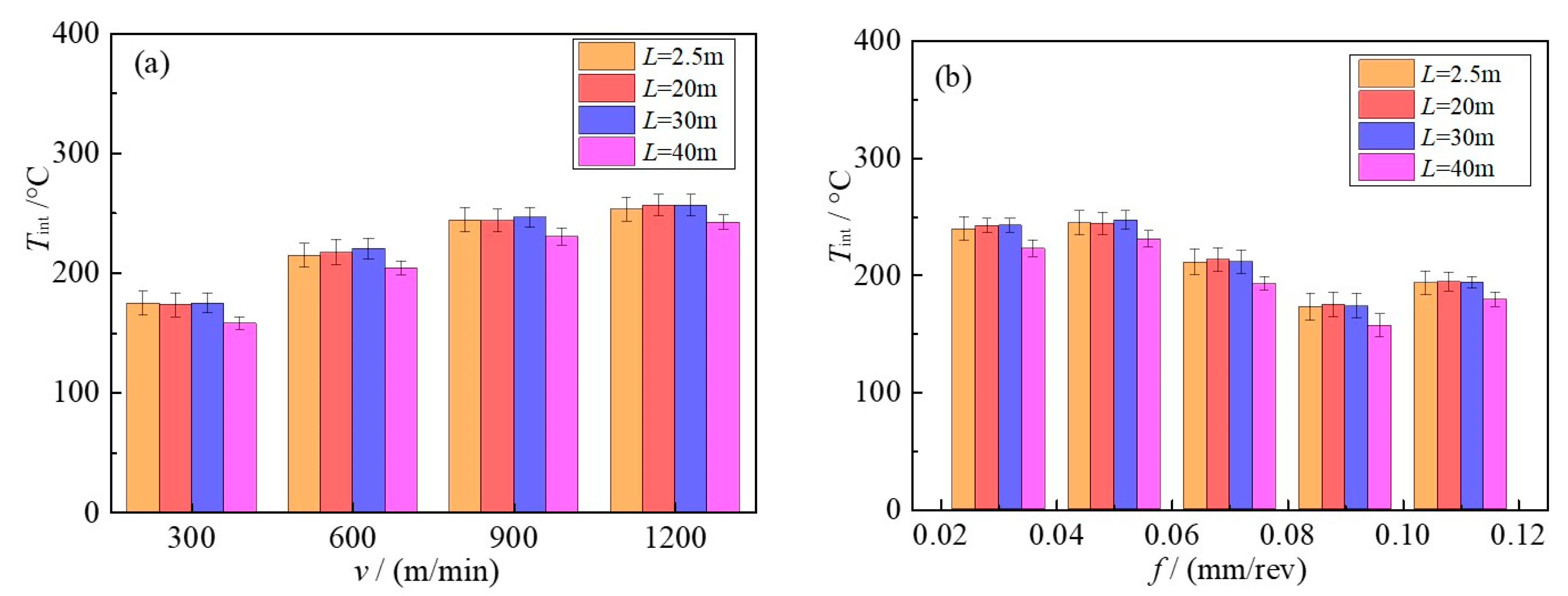
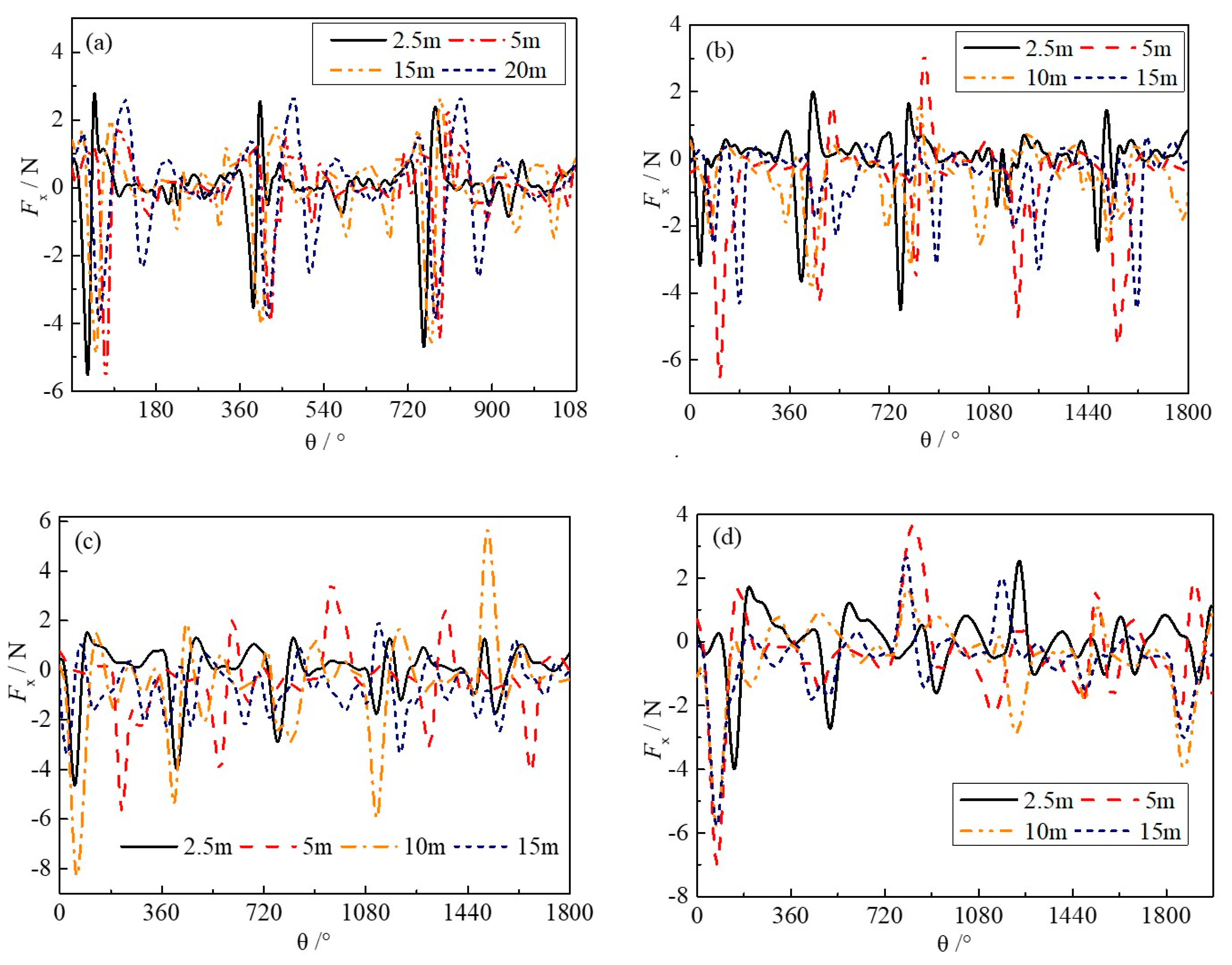









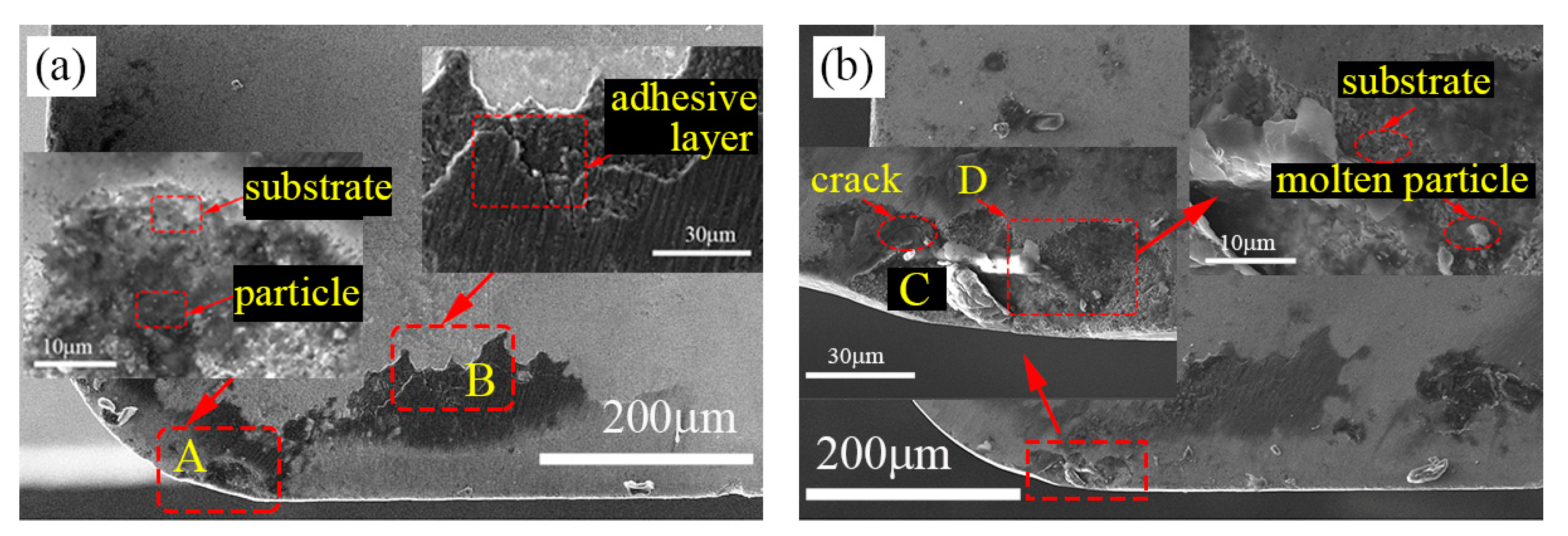
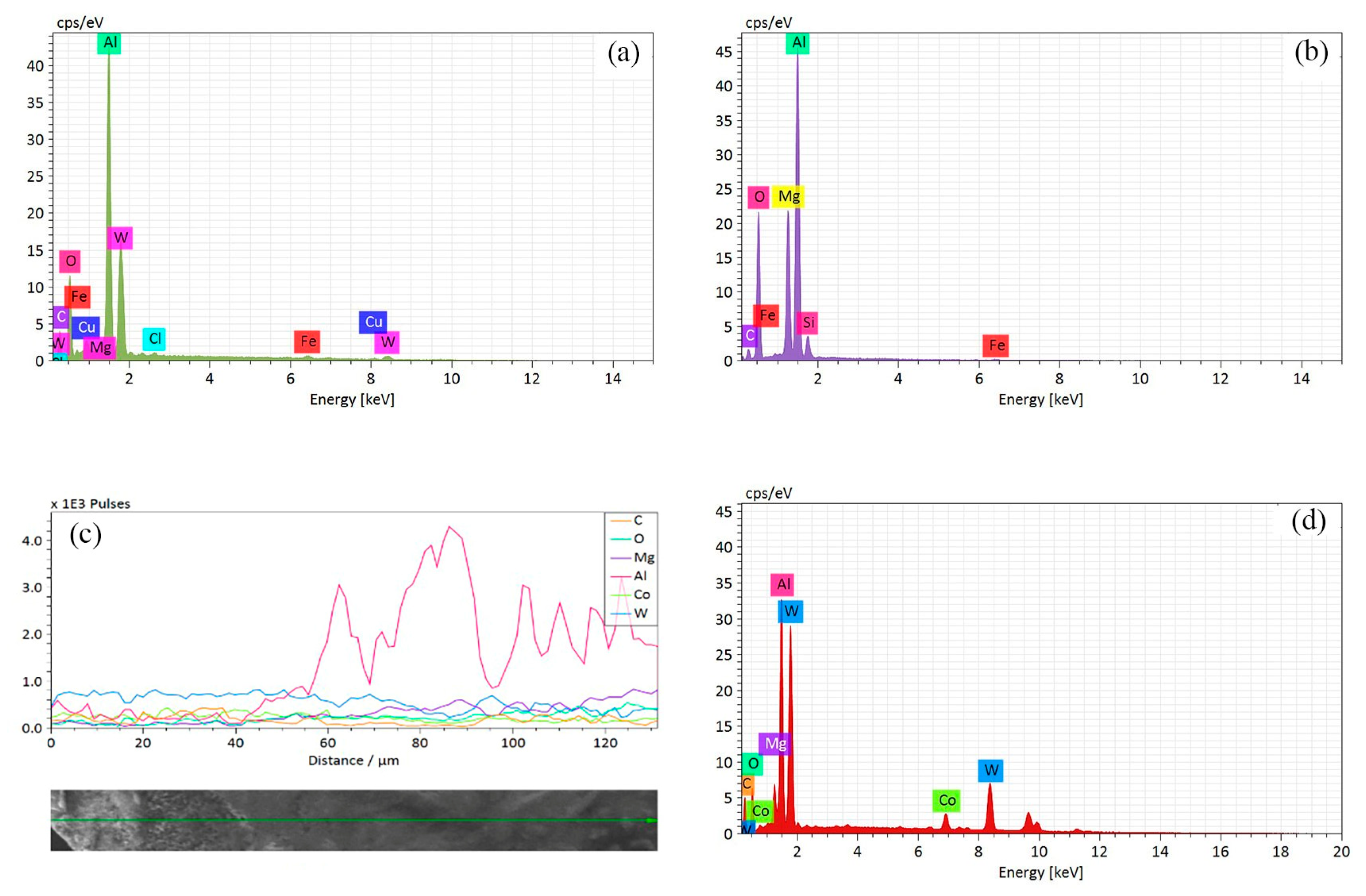

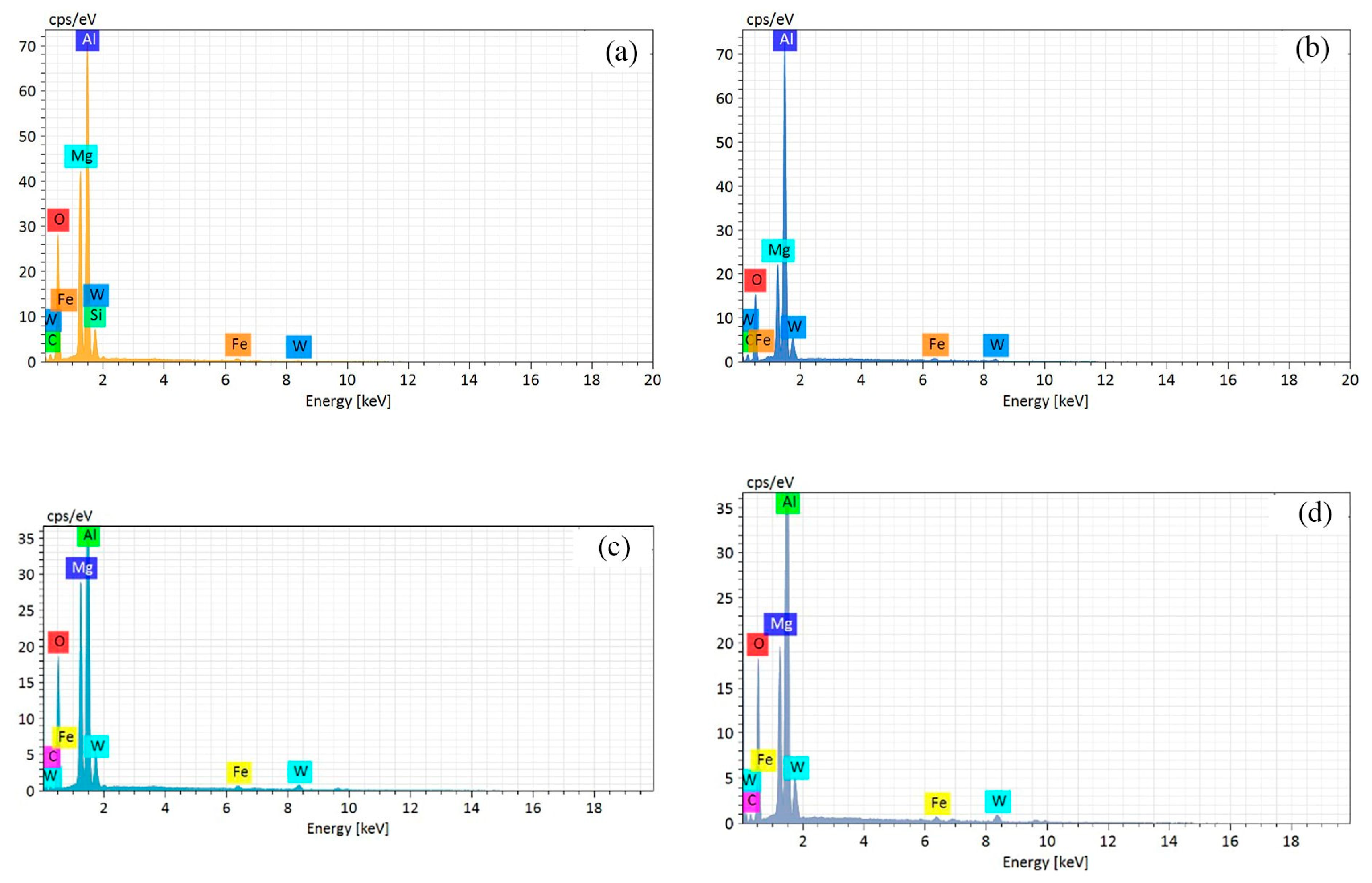
| Si | Fe | Cu | Mg | Mn | Zn | Ni | Sn | Al |
|---|---|---|---|---|---|---|---|---|
| 9.6–12 | <1.3 | 1.5–3.5 | <0.3 | <0.5 | <1.0 | <0.5 | ≤0.3 | others |
| Material Parameter | Workpiece | Tool |
|---|---|---|
| Density/kg·m−3 | 2.67 × 103 | 15 × 103 |
| Young’s modulus/GPa | 76 | 800 |
| Poisson’s ratio | 0.33 | 0.2 |
| Specific heat/J·kg−1·K−1 | 962 | 200 |
| Thermal conductivity/W·m−1·K−1 | 92.6 | 46 |
| Expansion coefficient/K−1 | 2.06 × 10−5 | 4.7 × 10−6 |
| Cutting Parameters | Value |
|---|---|
| Cutting speed/(m/min) | 300~1200 |
| Feed/(mm/rev) | 0.03~0.11 |
| Cutting width/mm | 3 |
| Cutting depth/mm | 0.5 |
| Milling length/m | 0~40 |
Disclaimer/Publisher’s Note: The statements, opinions and data contained in all publications are solely those of the individual author(s) and contributor(s) and not of MDPI and/or the editor(s). MDPI and/or the editor(s) disclaim responsibility for any injury to people or property resulting from any ideas, methods, instructions or products referred to in the content. |
© 2023 by the authors. Licensee MDPI, Basel, Switzerland. This article is an open access article distributed under the terms and conditions of the Creative Commons Attribution (CC BY) license (https://creativecommons.org/licenses/by/4.0/).
Share and Cite
Meng, X.; Lin, Y.; Mi, S.; Zhang, P. The Study of Tool Wear Mechanism Considering the Tool–Chip Interface Temperature during Milling of Aluminum Alloy. Lubricants 2023, 11, 471. https://doi.org/10.3390/lubricants11110471
Meng X, Lin Y, Mi S, Zhang P. The Study of Tool Wear Mechanism Considering the Tool–Chip Interface Temperature during Milling of Aluminum Alloy. Lubricants. 2023; 11(11):471. https://doi.org/10.3390/lubricants11110471
Chicago/Turabian StyleMeng, Xinxin, Youxi Lin, Shaowei Mi, and Pengyu Zhang. 2023. "The Study of Tool Wear Mechanism Considering the Tool–Chip Interface Temperature during Milling of Aluminum Alloy" Lubricants 11, no. 11: 471. https://doi.org/10.3390/lubricants11110471





